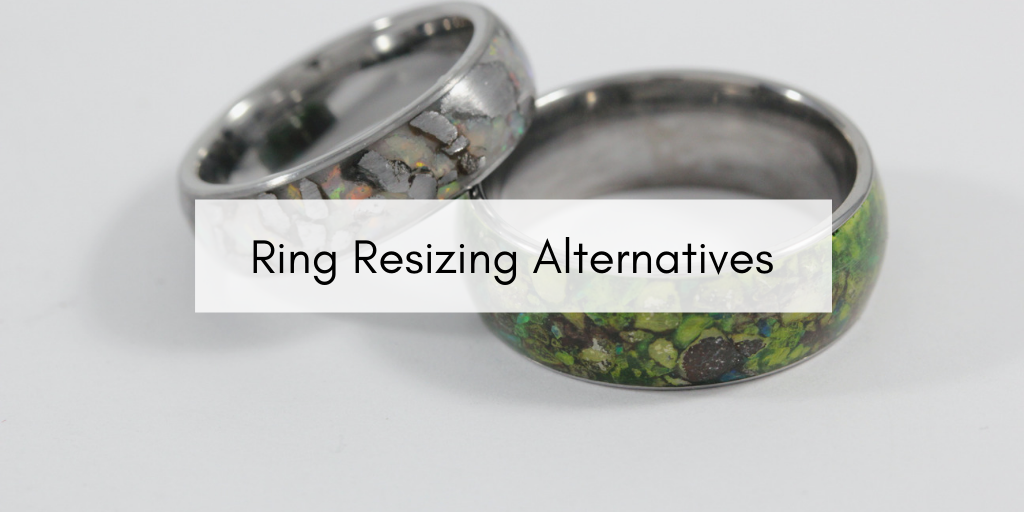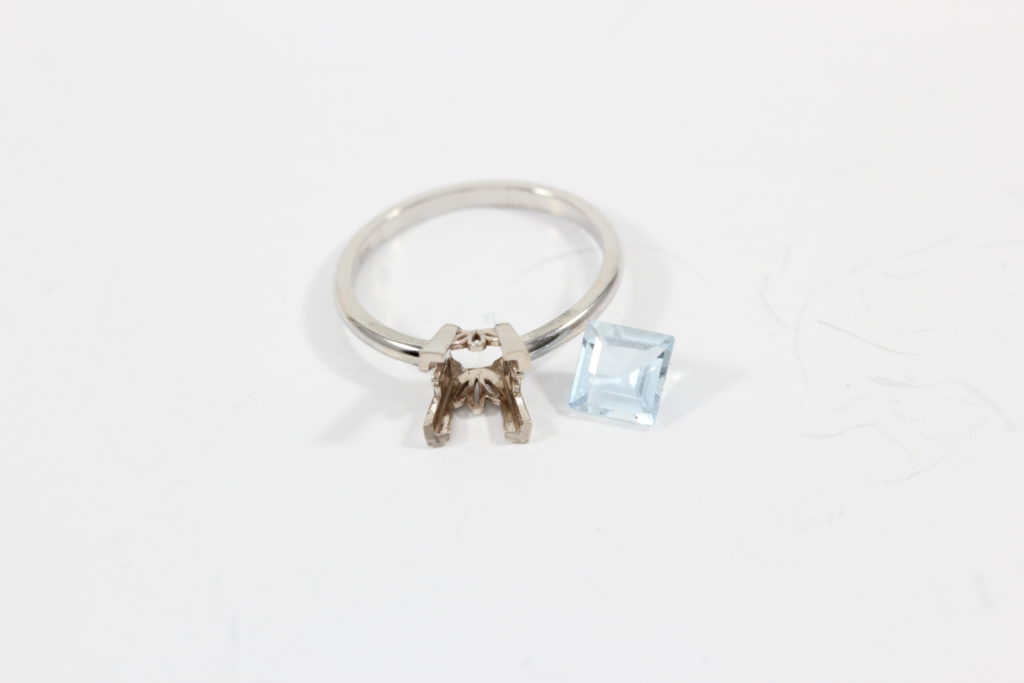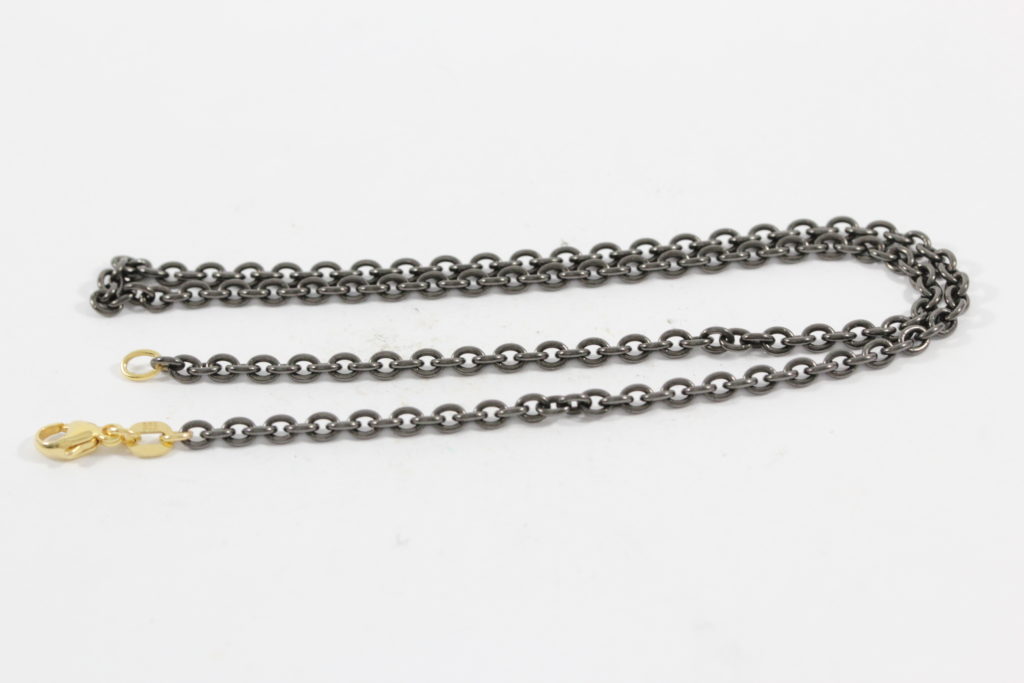Jewelry Debate: Channel Set Vs Pavé
Written by Annabelle
October 7, 2019

Jewelry is an extended part of fashion, and much like fashion it has its furious, everlasting arguments. Aside from the constant bickering back and forth about white gold vs yellow gold vs rose gold, the way stones are set can also cause a lot of debating at the jewelry counter. If you've been shopping for a piece of your own, you may have heard people go back and forth about stones that are channel set vs pavé set. But what do those terms mean for you? Learn more here.
Stone Settings
The way a stone is secured in a piece of jewelry can vary greatly. There are many types of settings that showcase stones differently, with ranging levels of required maintenance. For instance, a prong setting is designed to let a lot of light in, but it needs to be checked for wear every year. On the other hand, a bezel setting doesn't allow for as much light to hit the stone, but is comparatively more protective.
Certain settings are more commonly used for side accent stones than center stones. The channel setting and the pavé setting fall into this category.
Channel Setting
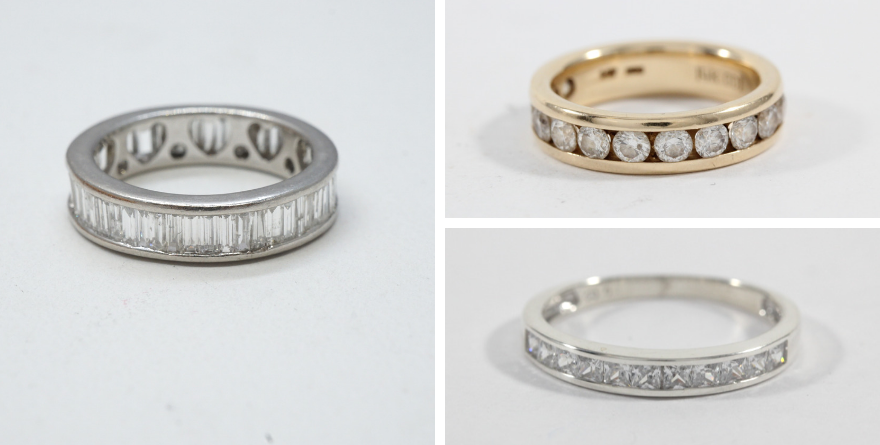
From left to right: baguette channel, round channel, and princess channel
- Structure: A channel setting is constructed via a deep gap in the metal of the jewelry. This gap is framed by two rails that curve over the gap, holding the stones in.
- Ideal stone cut: Round cut, baguette cut, princess cut.
- Pros: The channel setting is very protective and stones don't easily fall out of the gap due to the railing in the front. It's also comparatively resilient, making it an excellent choice for people who use their hands a lot. This is because the rails shield the stones from any contact with hard surfaces. Because of its seamless look and durability, the channel setting is typically used for eternity bands as well.
- Cons: Channel settings with round cut stones have gaps in between the gems. This means that dirt can stay trapped in there, making the ring impossible to clean without a professional ultrasonic or steam cleaner. In addition, it doesn't allow for light to hit the back of the gem, which reduces the sparkle of the stones. If the stones are loosened, it takes more work to tighten them than an average prong setting, increasing the price for the work.
Pavé Setting
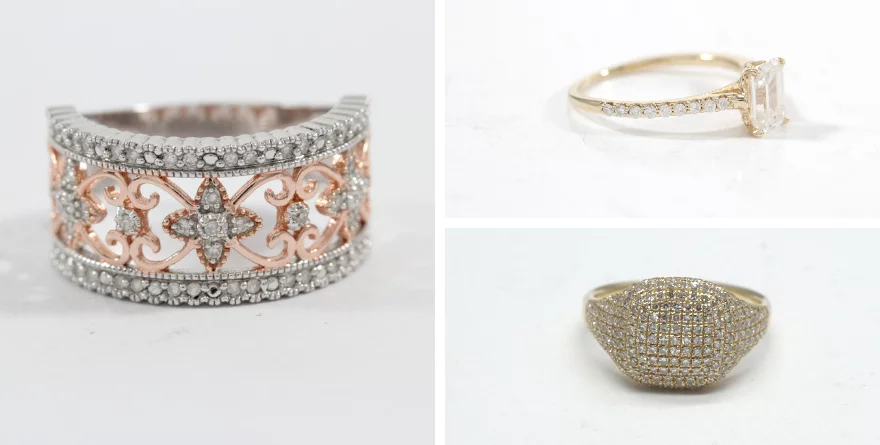
These pave rings display the versatility of this setting style.
- Structure: The pavé setting is created via a hole in the metal. The gem is then placed into the hole, and tiny beads hold the gem in place. There are different variations of this setting, such as micropavé, which only uses stones that are 0.005 ct or smaller.
- Ideal stone cut: The pavé setting can only be used with round cut stones.
- Pros: Pavé is normally used for detailing, and due to how the stones are set it can be very versatile for jewelry design. In some designs it's even used as the main focal point, instead of a center stone. This is commonly seen in illusion-style designs that use pavé to create the look of a “larger” stone.
- Cons: The beads that hold the stones down in pavé are very weak and prone to wearing completely away over time. Resetting or replacing missing stones can be a constant struggle. In addition, pavé can really get in the way of ring resizing if the stones are on the shoulders and sides of the ring; when the metal is moved, the settings are affected and the stones will become loose.
So channel set vs pavé set; which one do you prefer? Channel setting for its strength and clean aesthetic, or pave for its dainty look and versatility? Let us know in the comments below!
